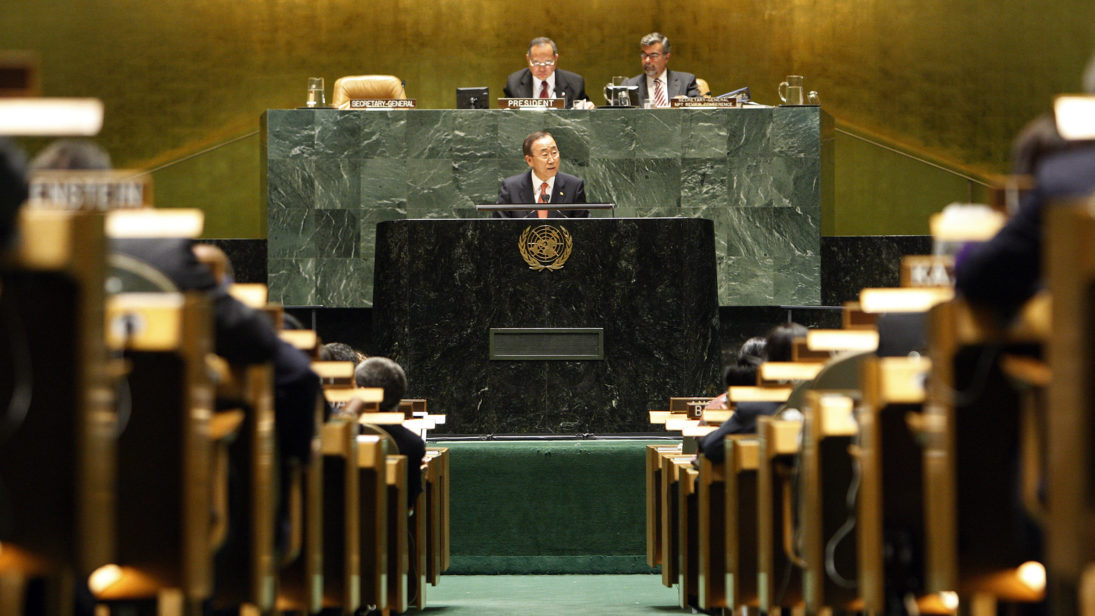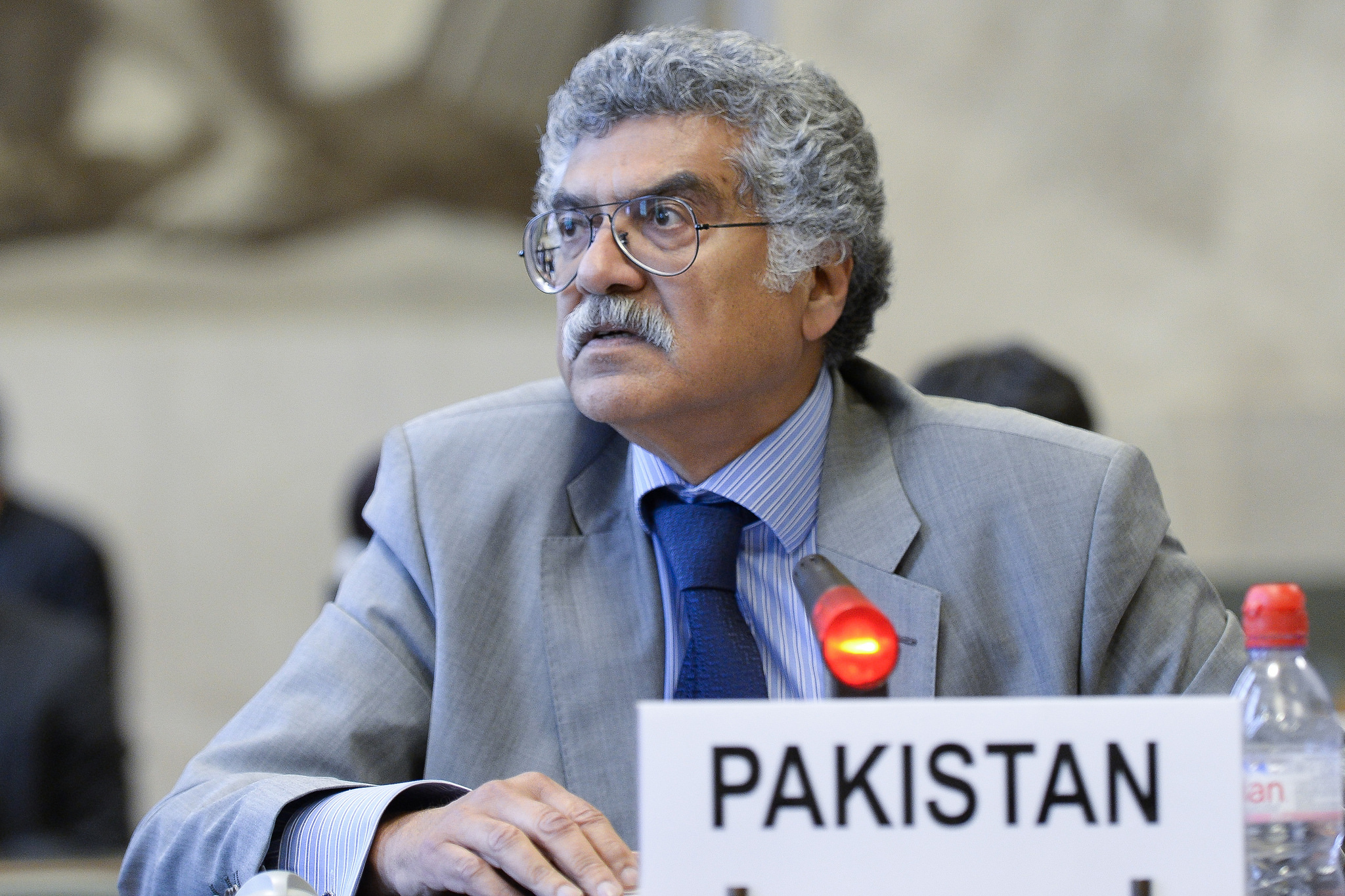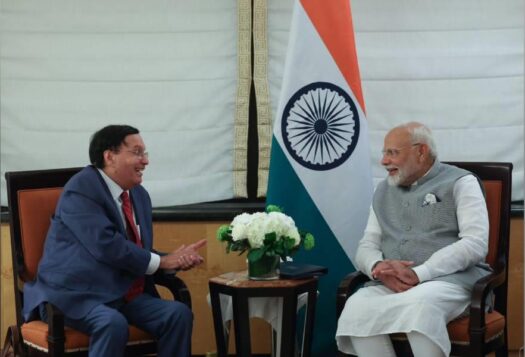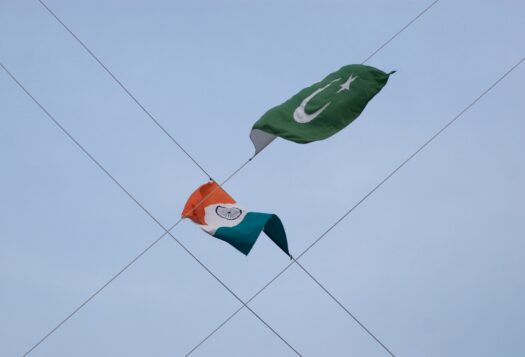
Despite objections from major nuclear powers, more than 120 countries launched the first round of United Nations negotiations on a global nuclear weapons ban in March in New York City. Britain, France, Israel, Russia, and the United States all voted against the treaty, whereas China, India, and Pakistan abstained. With the second round of negotiations next month, a hard look is needed at whether this new initiative aiming for total disarmament is necessary, productive, or wise. Two key issues stand out. First, the treaty is unrealistic – nuclear disarmament has been attempted and failed time and again under a number of existing treaties. Second, nuclear disarmament on its own does not do much to prevent conflict, especially with rising conventional arsenals around the globe. Thus, rather than devoting time and energy to a new initiative, the international community should focus on improving and fulfilling the objectives of existing regimes.
Resistance from Nuclear States
Austria, Brazil, Ireland, Mexico, South Africa, and Sweden, all non-nuclear states, took the lead in this humanitarian initiative to ban nuclear weapons. The United States and several other nuclear powers argued that a ban would not work and that the world should stick with a more gradual approach to disarmament. Ironically, the United States has still not ratified the Comprehensive-Test-Ban Treaty (CTBT) that it signed back in September 1996, which hardly demonstrates an inclination towards even gradual disarmament. Similarly, Britain’s Ambassador to the United Nations Matthew Rycroft did not attend the negotiations, claiming that a ban treaty could not lead to “effective progress on nuclear disarmament.” France’s Deputy Ambassador to the United Nations, Alexis Lamek, resisted the treaty because of, he argued, his country’s continued reliance on nuclear weapons for security and stability. China and Russia also resisted due to security concerns.
The South Asian nuclear states contend that a disarmament treaty outside of the Conference on Disarmament (CD) is a clear duplication, as the CD is the sole body responsible for governing disarmament issues. Pakistan has always been a supporter of nuclear disarmament. It proposed that the South Asian region be a nuclear weapons-free zone soon after the Indian so-called “peaceful nuclear explosion” in 1974. However, Pakistan refrained from voting in favor, arguing that there is no need for a treaty outside the CD. India opposes the treaty on the grounds that it is not a comprehensive instrument on nuclear disarmament.
Issues to Consider
The concept of a nuclear ban is unrealistic. Currently, no country is taking any steps towards nuclear disarmament – especially the P-5 states, which are bound by a commitment to do so under the Nuclear Nonproliferation Treaty (NPT). There have been numerous international treaties negotiated at both the bilateral and multilateral levels for the same purpose, but none have achieved significant success. Negotiations on the proposed Fissile Material Cutoff Treaty (FMCT) have still not begun after decades. It can be argued that after years of stalemate over the CTBT, the United Nations is interested in introducing another treaty to show its eagerness to work on disarmament. But if the NPT and other nuclear treaties have not yet accomplished their goals, how can one expect this of a new treaty?
Hypothetically, even if global nuclear disarmament is achieved, it still will not do much to limit the possibility of future conflict. The move towards global disarmament would cause deterrence to rely on conventional force imbalances rather than nuclear ones. If a crisis occurs and war becomes unavoidable, conventional aggression could still flare up in the absence of nuclear weapons. Nuclear disarmament on its own does not make substantial progress towards risk management or escalation control. Thus, as Dr. Zafar Khan has argued, the international community’s approach to complete disarmament needs to address issues of discrimination, conventional and nuclear force modernization, negative security assurances, conventional imbalances, nonproliferation regime restructuring, and conflict resolution.

Through the lens of deterrence optimism, one must also consider the fact that nuclear weapons may have prevented a third world war. In the absence of a conventional arms control regime, complete nuclear disarmament could push the world towards increased aggression, especially considering the growing conventional arms build-up and arms commerce by the nuclear-weapons states. As Dr. Zafar Iqbal Cheema has rightly argued, the idea of disarmament seems noble, but we must consider the circumstances under which we intend to achieve it. Pakistan’s representative to the First Committee on Disarmament, Ambassador Zamir Akram, has emphasized the importance of containing advancement in the number and sophistication of conventional weapons. He advocated for a balanced reduction of armed forces and conventional armaments, as it has an underlying relationship with the continued dependence on nuclear weapons. Disarmament is not just about nuclear weapons—the missile race around the globe is also a concern. For instance, ballistic missiles greatly influenced U.S. strategy in the nuclear age. With South Asia and North Korea’s mounting missile developments, the world is heading in a dangerous direction towards enhanced missile programs.
The Way Forward
Since the second round of negotiations will be take place in June-July, some are optimistic about concluding the treaty despite the fact that few states consider the March session a success – success cannot be achieved without the support of the nuclear-weapons states. Instead of devoting time and energy to new initiatives such as the nuclear weapons ban treaty, the international community should focus on more realistic and pertinent objectives, such as limiting nuclear commerce around the globe. Open-ended nuclear deals such as that between India and the United States only increase insecurity and threaten strategic stability, ultimately pushing other states to increase and modernize their weaponry. Finally, the P-5 should show an increased willingness to work towards nuclear disarmament under the existing treaties. A good place to start would be substantial development on the New START agreement between the United States and Russia, which aims to limit both sides’ nuclear arsenals.
***
Image 1: United Nations Photo via Flickr
Image 2: UN Geneva via Flickr


